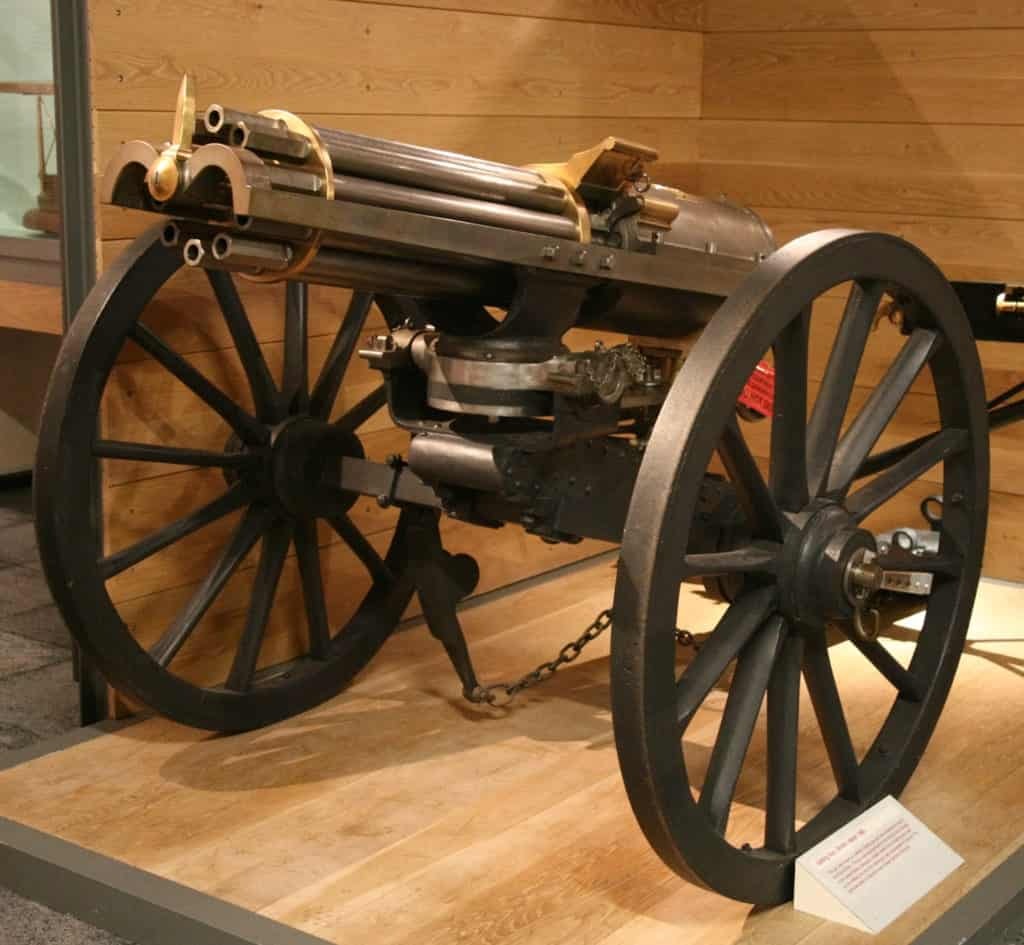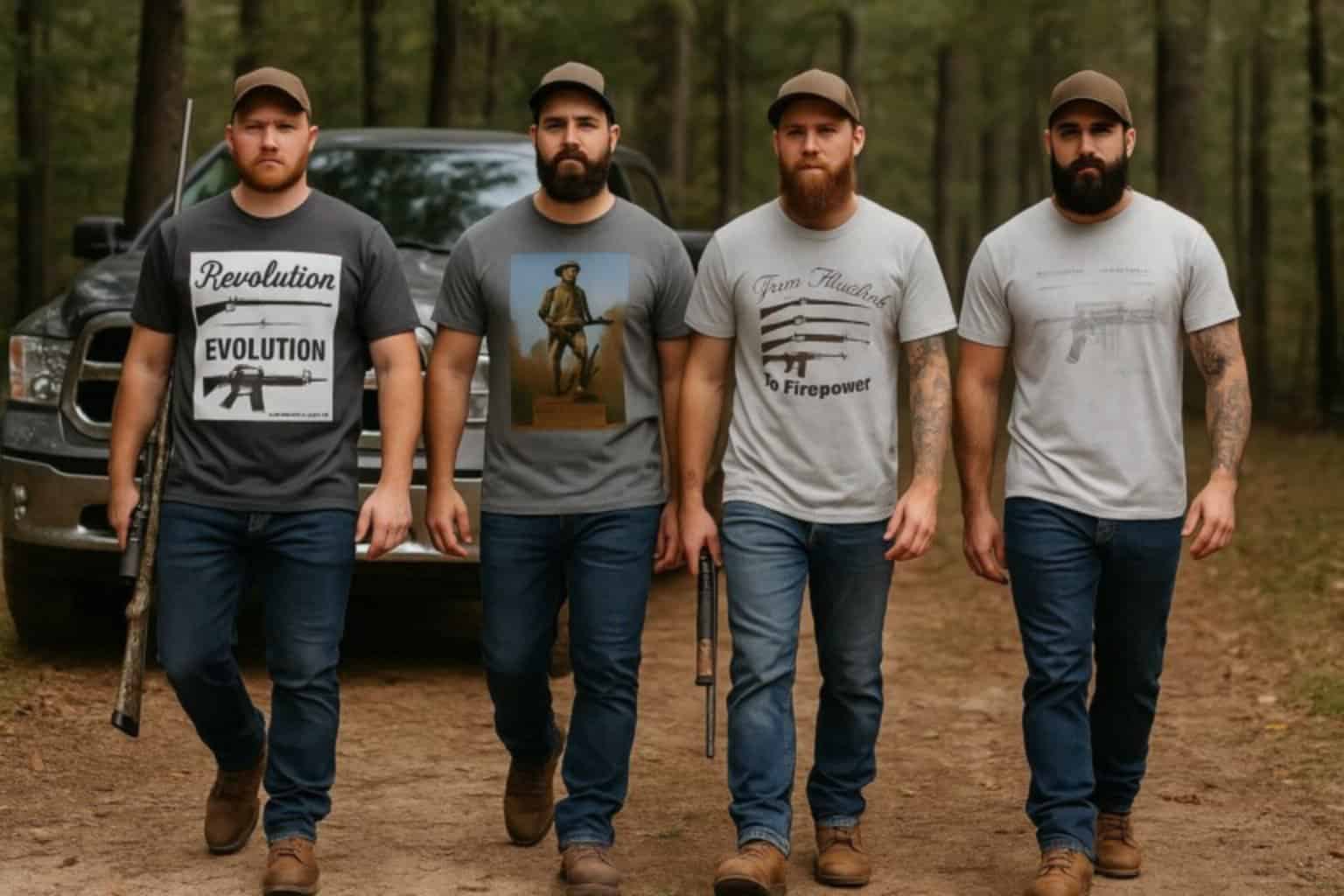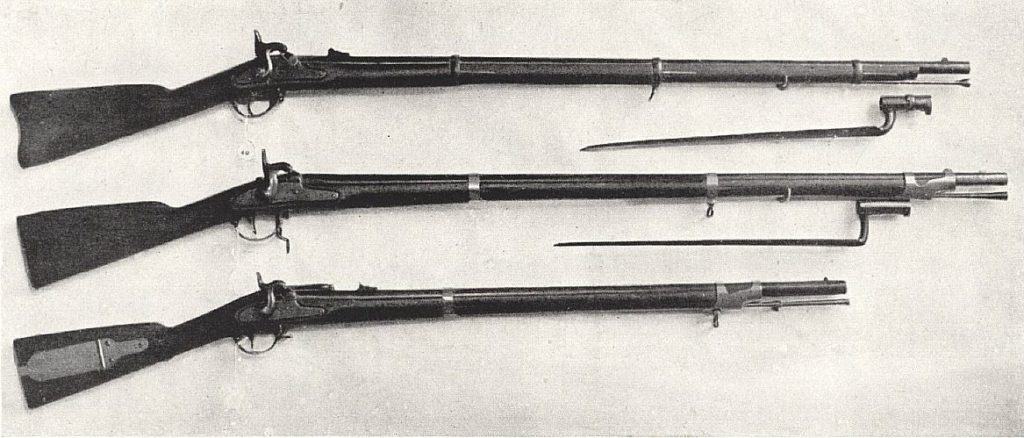
Introduction: A Weapon Born of Innovation and Tragedy
In the midst of the American Civil War, while much of the world still relied on slow, single-shot muskets and rifles, one invention promised to redefine the battlefield forever: the Gatling gun. Patented on November 4, 1862, by Dr. Richard Jordan Gatling (U.S. Patent No. 36,836), this early rapid-fire weapon laid the foundation for the modern machine gun.
Gatling was not a soldier but a physician and inventor. He was motivated by a grim observation—far more soldiers were dying from disease than gunfire. Gatling hoped that by creating a weapon so efficient and so lethal, it might reduce the number of men needed in battle, thereby cutting down on the spread of disease and hastening the end of conflicts. What he actually created was a new era of warfare.
Origins and Inventor: Dr. Richard J. Gatling
Born in 1818 in Hertford County, North Carolina, Richard Gatling was a mechanical genius who held over 40 patents. Before designing his iconic weapon, he had already developed a screw propeller for steamboats and a practical grain drill. With the outbreak of the Civil War, Gatling turned his mind toward military technology.
In a 1877 letter, Gatling clarified his motivation:
"It occurred to me that if I could invent a machine—a gun—which could, by its rapidity of fire, enable one man to do as much battle duty as a hundred, it would, to a large extent, supersede the necessity of large armies, and consequently, exposure to battle and disease would be greatly diminished."
The Gatling Gun’s Mechanical Genius
The Rotary Barrel System
The core of the Gatling gun’s innovation was its rotating barrel cluster. Unlike later machine guns that used gas or recoil to operate, the Gatling gun relied on a hand-crank to rotate six to ten barrels around a central axis. Each barrel operated as a separate firing chamber, cycling through loading, firing, and extraction in turn.
This rotary system allowed:
- Heat dispersion among multiple barrels
- Mechanical reliability
- Sustained high rate of fire
Loading and Firing Mechanism
Early models used gravity-fed vertical hoppers loaded with metallic rimfire cartridges, which were dropped into the breech by gravity and pushed into the chamber by a cam. Each rotation of the crank advanced the barrels through a full cycle:
- A cartridge was loaded into an empty chamber
- The bolt advanced, chambering the round
- The firing pin struck the primer as the barrel reached its lowest point
- As the crank turned, the bolt withdrew, and the spent casing was ejected
Later models introduced Bruce feed systems and drum magazines, increasing feeding reliability and ammunition capacity.
Ammunition Evolution
- Model 1862: Chambered for proprietary .58 rimfire metallic cartridges
- Model 1871 & 1874: Transitioned to centerfire ammunition
- Model 1877 & 1883: Chambered for .45-70 Government, greatly improving performance and standardization
- U.S. Army Model 1893: Chambered in .30-40 Krag to align with new infantry rifles
The Gatling gun’s adaptability to evolving cartridge technologies ensured its continued relevance for over three decades.
Battlefield Use and Deployment
Limited Civil War Use
Although the Gatling gun was patented in 1862, widespread adoption was delayed. Skepticism from Union leadership and logistical hurdles meant only a few units saw action. General Benjamin F. Butler purchased twelve guns with his personal funds, deploying them at the Siege of Petersburg in 1864.
Despite minimal use in the Civil War, these early field trials laid the groundwork for postwar evaluation.
U.S. Army Adoption and Use in the Indian Wars
In 1866, the U.S. Army officially adopted the Gatling gun. By the 1870s, the weapon was in regular use during the Indian Wars. Mounted on wheeled carriages or horse-drawn limbers, it provided suppressive firepower against mobile Native American forces.
Notable uses:
- Red River War (1874) – Gatlings provided covering fire in several engagements
- Battle of the Washita (1868) – Custer’s 7th Cavalry was equipped with Gatlings, though he left them behind at the Battle of the Little Bighorn in 1876
Global Deployment
The Gatling gun quickly gained international acclaim:
- British Empire: Used in colonial campaigns such as the Anglo-Zulu War (1879) and in Sudan during the Mahdist War
- Imperial Russia: Licensed production for use in Russo-Turkish conflicts
- Latin America: Used in several regional conflicts including the War of the Pacific (1879–1884)
Battle of San Juan Hill (1898)
In the Spanish-American War, Lt. John H. Parker led a Gatling gun detachment that played a decisive role in the Battle of San Juan Hill. Parker’s three Model 1895 guns fired over 18,000 rounds in under ten minutes, devastating Spanish positions and facilitating Roosevelt’s charge.
Comparison with the Maxim Gun
Hiram Maxim’s invention in 1884 represented the next evolutionary step. Where the Gatling gun relied on external manual power, the Maxim gun was the first to fully automate the firing cycle using recoil energy.
| Feature | Gatling Gun | Maxim Gun |
|---|---|---|
| Power Source | Hand-crank (manual) | Recoil-operated (automatic) |
| Rate of Fire | Up to 900 rounds/min (manual) | 600 rounds/min (automatic) |
| Barrel System | Multiple rotating barrels | Single, water-cooled barrel |
| Crew Size | 2–6 | 2–4 |
| Maintenance | Simpler, durable | Complex, sensitive to fouling |
Despite being replaced by the Maxim in front-line service, the Gatling principle found new life with the development of electric-motor driven rotary cannons.
Legacy: From Hand-Cranked Gun to Rotary Cannons
Though retired from infantry service by 1911, the Gatling gun’s rotary concept lived on. The core design was revitalized in the 20th century to meet the demands of aerial and vehicle-mounted warfare.
Notable Modern Descendants
- M61 Vulcan: A six-barrel, 20mm cannon firing up to 6,000 rounds per minute. Used on F-16s, F/A-18s, and Navy ships.
- GAU-8 Avenger: A 30mm rotary cannon designed for the A-10 Thunderbolt II, delivering tank-killing firepower.
- M134 Minigun: A 7.62mm machine gun seen on helicopters, Humvees, and naval craft.
All of these use external electric motors to achieve consistent, high-speed rotation—mechanically akin to the crank Gatling envisioned, but driven by modern power sources.
Conclusion: The Gun That Changed Everything
The Gatling gun stands as one of the most revolutionary firearms of the 19th century. Born from the mind of a physician aiming to save lives, it ended up shaping the battlefield like few inventions before or since. Its legacy is not merely historical—it is mechanical and conceptual, echoing through every modern rotary weapon system deployed today.
From the muddy trenches of the Civil War to the high skies of modern jet warfare, the spirit of the Gatling gun lives on—proving that true innovation never dies, it simply evolves.
Read more about this weapon here:
If you want to read more or interact with other enthusiasts of this weapon, there's a forum here.
If you know of any forums or sites that should be referenced on this listing, please let us know here.












